By Stephen Living/DWR
Photos by Stephen Living/DWR
A big part of appreciating the habitats around us can come from understanding what plants make up those habitats. Virginia has an incredible diversity of habitats and plant species, including more than 350 species of trees. Of these, 78 or so are considered “common.” We use leaves, fruits, and flowers to help us identify these species, but those aren’t necessarily helpful when enjoying a winter walk in the woods. Fortunately, there are still plenty of clues that can help narrow down what you’re looking at.
Where are you?
Some trees are only found in specific parts of Virginia. A red spruce might be found in the mountains of western Virginia while a bald cypress grows in the floodplains of the Coastal Plain.
Green all year
We have a number of evergreen species that keep their leaves all year. This includes conifers like pines. Take a close look at the bundles of needles on the twigs of pine trees—these can help identify the tree. Two needles in a bundle with short, twisted needles is a sure sign that you’ve found a Virginia pine. Compare it here to the longer straight needles in a bundle of three for a loblolly pine.

If you look closely, you can distinguish between the needles of the loblolly pine (top) and the Virginia pine (bottom).
Some of our broadleaf trees are evergreen as well. The scalloped edges and glossy leaves of American holly are unmistakable. Female holly trees also have bright red berries that are a favorite of winter songbirds.
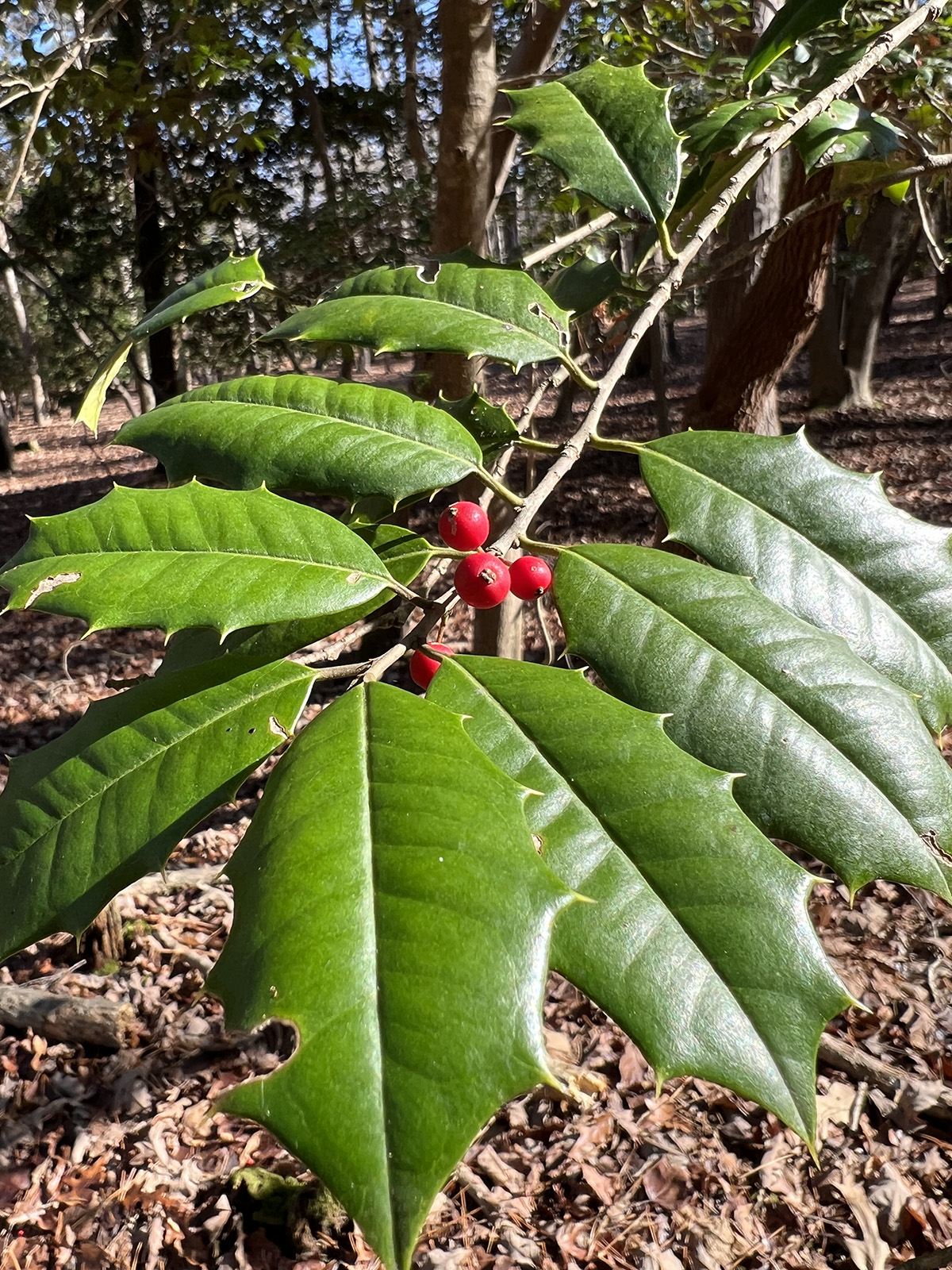
The spiky leaves and red berries of a female American holly.
Bark
Many tree species have distinctive bark. For species like American sycamore, it’s enough to identify the tree all on its own. Irregular patches of gray or tan flake off to reveal smooth pale bark below. It gives the trunk of the tree a jigsaw or camouflage pattern that is unmistakable. Sweet gum may have corky ridges.

American sycamore bark (left) has a distinctive patchy appearance, while sweet gum (right) has raised ridges or spots.
Persistent fruits or leaves
Some trees like beech or many of our oaks hold onto leaves well into winter. This can be a good clue when the surrounding trees are sporting bare branches. Sometimes distinctive fruits will remain on the tree through the year. The cone of winged fruits from a tulip poplar or the gumball of a sweetgum are dead giveaways.
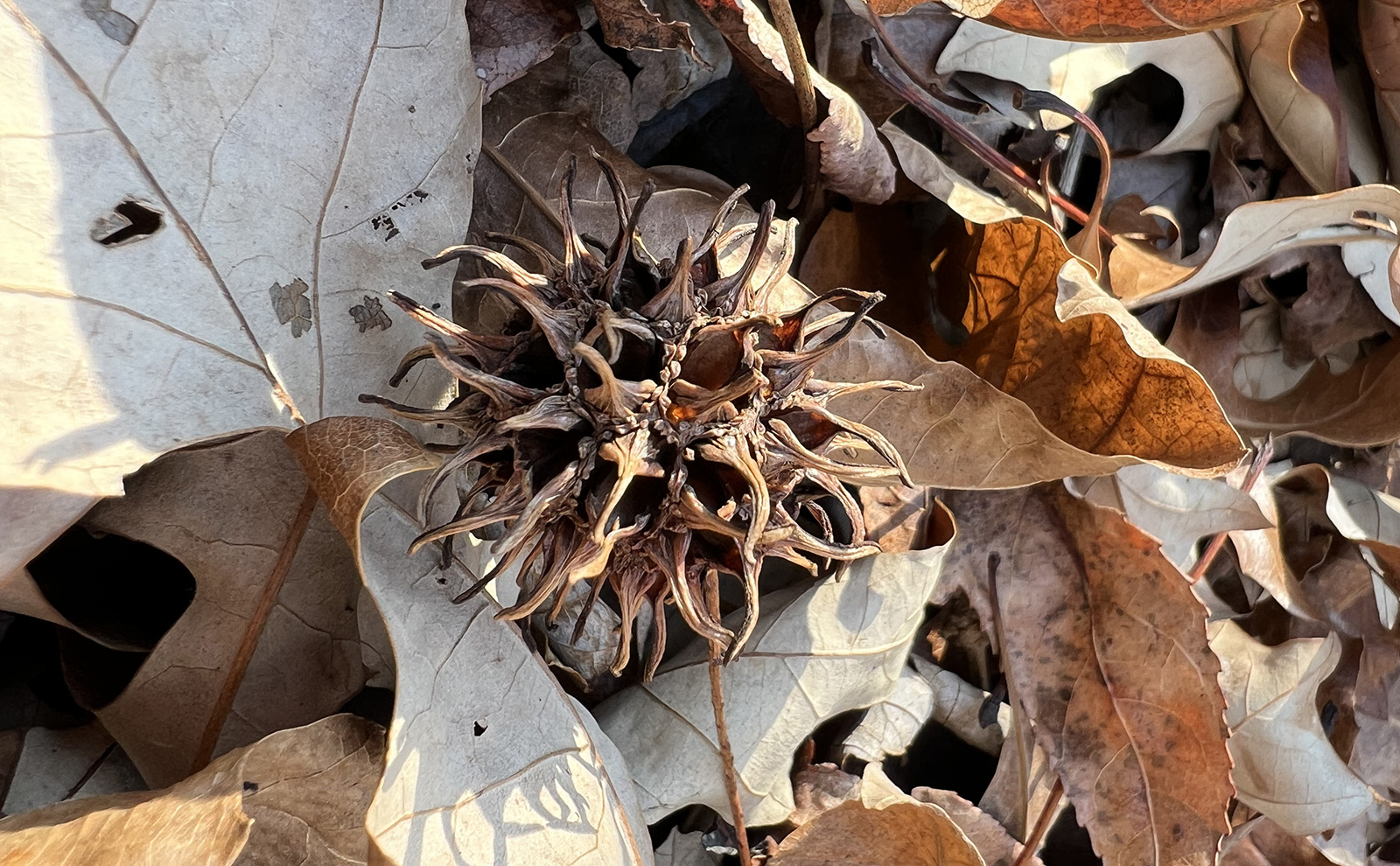
A distinctive sweet gum seed ball.
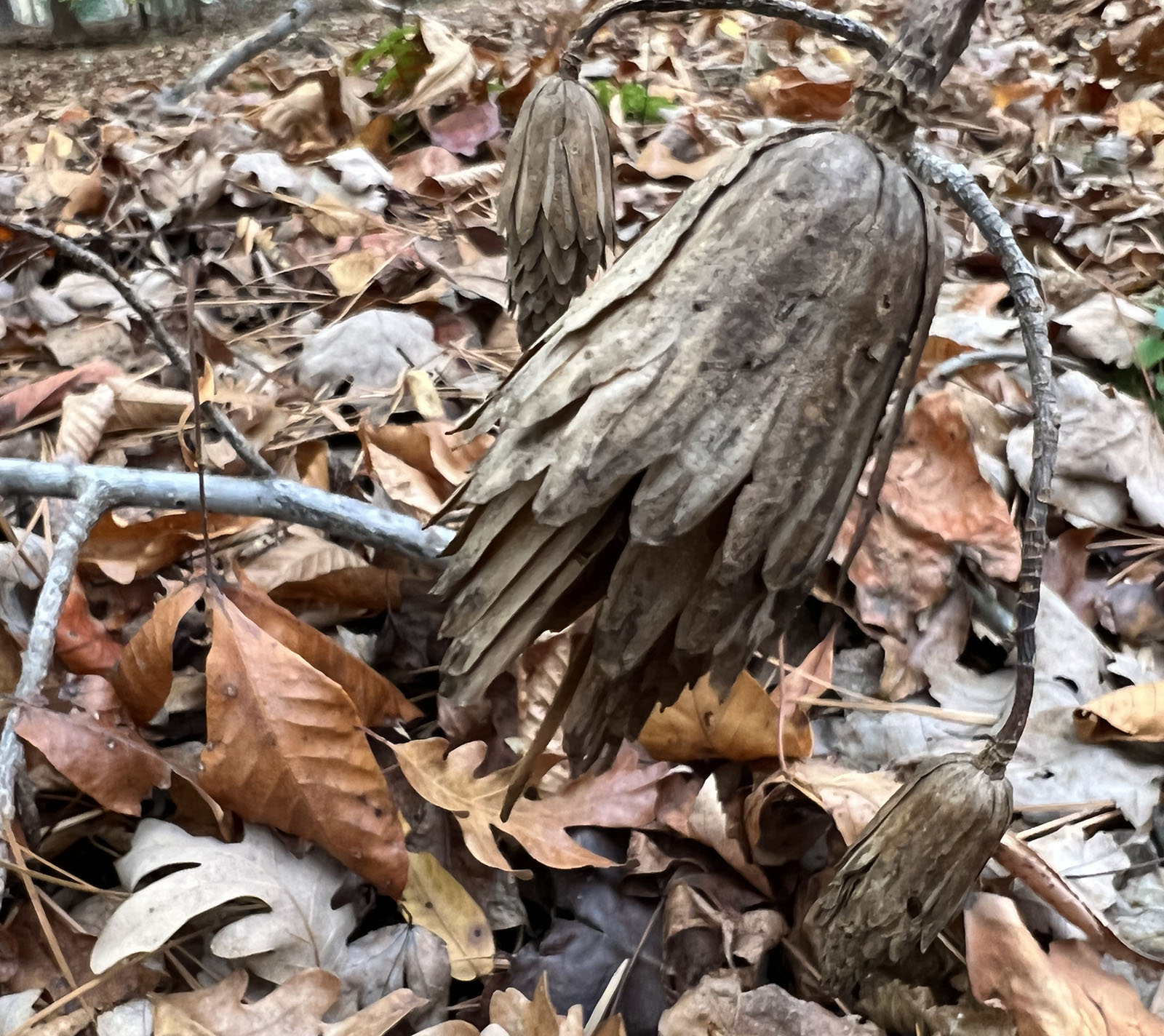
A tulip poplar seed cone.
Detective work
Even if none of these clues are obvious, you can still solve your tree mystery. The twigs of trees have a variety of unique characteristics that us identify the tree species. There aren’t any special tools needed to investigate, but a hand lens and a pocket knife can be useful.
When the leaves fall off a tree in the fall, they leave behind scars where they attached to the twig. These scars have unique shapes and arrangements. The thing to look at is how the leaves (or their scars) are arranged on the twig. Do they alternate from side to side or were they opposite each other on the twig? The shape of the leaf scar can be distinctive as well—hickories have large, heart-shaped leaf scars sometimes referred to as “monkey faces.”

A red maple twig with opposite leaf buds.
What do the buds look like? The buds themselves can be pretty identifiable. Beech trees have long narrow buds covered in overlapping scales. Tulip poplar buds have only two scales—almost like a clamshell.
The center of a twig is usually made up of soft spongy tissue called pith. The color and shape of this can also provide clues to identifying your tree. Hickories have a pith that is somewhat star-shaped in cross- section, while tulip poplar’s pith is segmented into chambers.
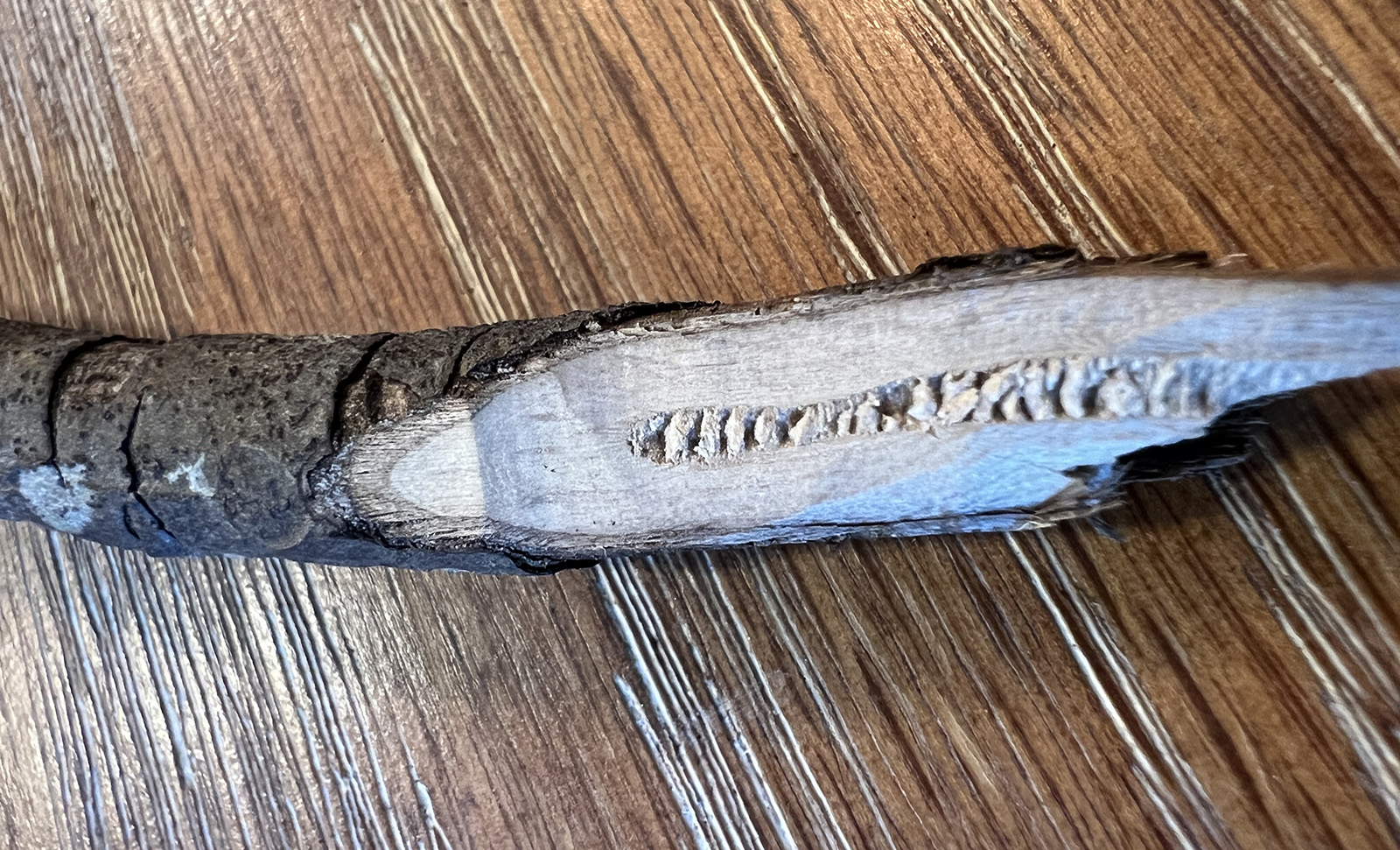
The pith of a tulip poplar’s branch has distinct chambers.
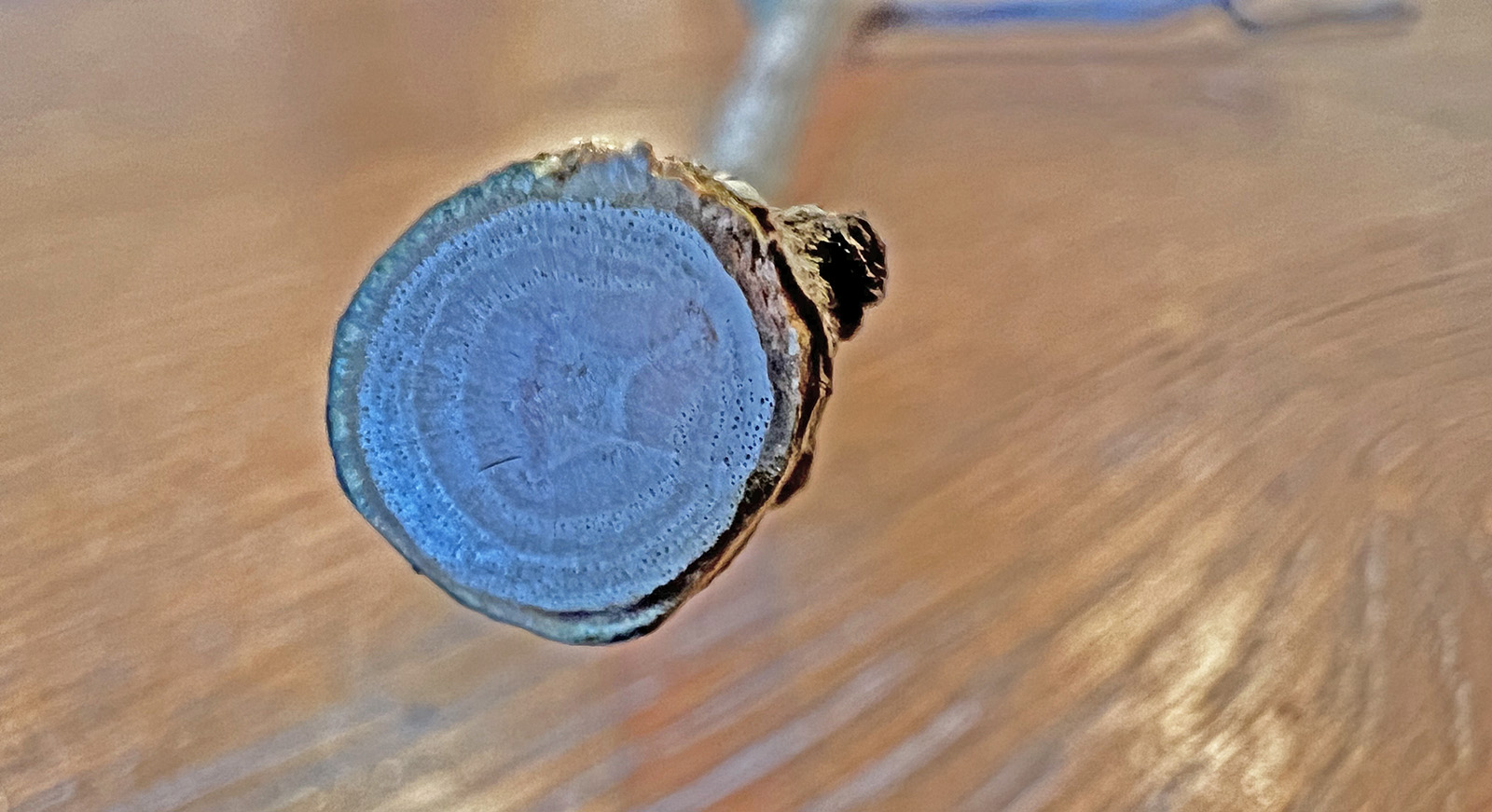
The pith of a hickory branch has a star-shaped core.
Putting it all together
With so many different features, how can you begin to decipher the trees you see when you’re exploring habitats around you?
Pick up a copy of the Virginia Department of Forestry’s Common Native Trees of Virginia Identification Guide. This easy-to-use guide has keys and full descriptions of the species you are likely to encounter.
Check out this key from Virginia Tech. After you answer a series of questions, it will steer you toward an answer about your tree. There are also apps like Seek, PlantNet, LeafSnap, or others.
Stephen Living, the DWR habitat education coordinator, is a biologist and naturalist with a lifelong love of wildlife and nature that began in the woods and streams of his childhood.


